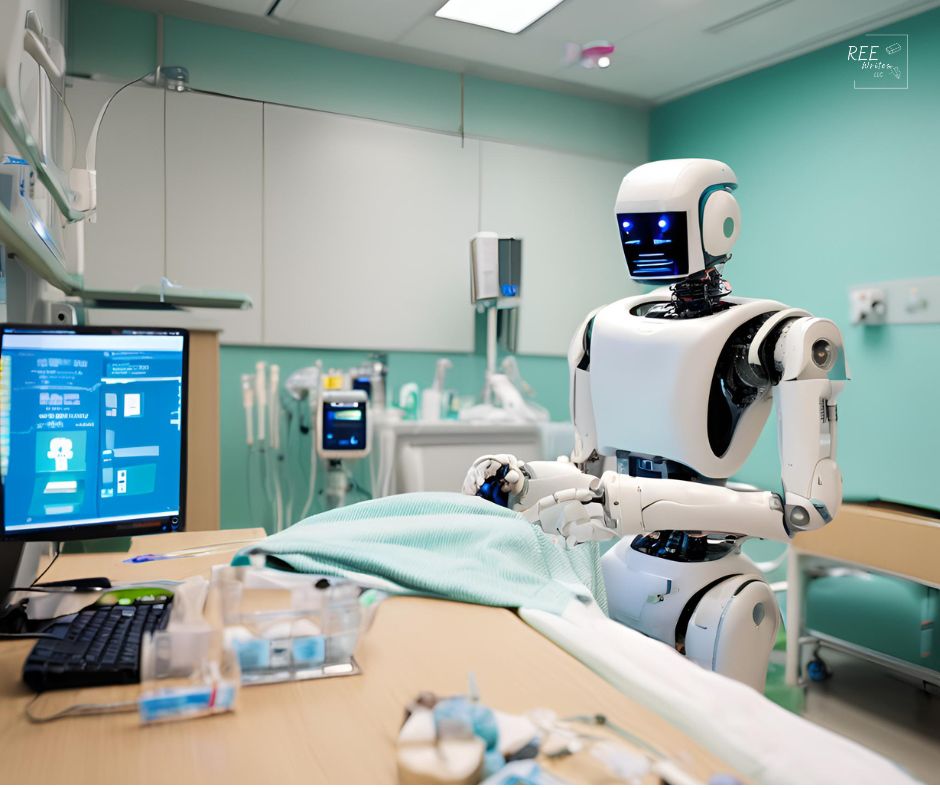The landscape of clinical trials is quickly evolving, with artificial intelligence (AI) playing an increasingly pivotal role. The number of AI-driven firms specializing in drug discovery and development has grown from 62 in 2011 (Sokolova, 2023) to 400 firms in 2022.
This shift is not just about cutting-edge technology; it’s about improving lives and bringing new treatments to patients faster than ever before. Let’s dive in and see how AI in clinical trials works in healthcare.
Contents
- The Current State of AI in Clinical Trials
- Improving Patient Engagement with AI
- Enhanced Trial Design with Digital Health Technologies (DHTs)
- Data Management and Analysis in Clinical Trials with AI
- Improving Safety Monitoring and Adverse Event Detection
- Accelerating Drug Discovery and Development
- Ethical Considerations and Regulatory Challenges
- The Future of AI in Clinical Trials
- Conclusion
The Current State of AI in Clinical Trials
Clinical trials are the most robust way to show the safety and effectiveness of a treatment or clinical approach, and provide evidence to guide medical practice and health policy. Unfortunately, they have a high failure rate.
Current clinical trials are complex, labor-intensive, expensive, and may involve errors and biases (Zhang et al., 2023). They often start late in the drug development cycle. Only around 10% of drugs entering the clinical trial stage get approved by the U.S. Food and Drug Administration (FDA) [Mai et al., 2023].
Key areas where AI is used in clinical trials include:
- Patient recruitment and retention
- Trial design and protocol optimization
- Data management and analysis
- Safety monitoring and detection of adverse drug reactions (ADRs)
- Drug discovery and development
According to McKinsey, AI adoption could boost up to $25 billion into clinical development within the pharmaceutical industry, with the potential to a total gain of $110 billion (Bhavik et al., 2024).
Beyond recruitment, AI is also revolutionizing how clinical trials are designed and conducted.
Improving Patient Engagement with AI

Traditional clinical trial methods often face challenges like slow patient recruitment, high dropout rates, and inefficient data analysis. AI is helping to address these issues by providing faster, more accurate, and more personalized solutions (Hutson, 2024).
Patient Recruitment
Traditional clinical trials have an average 30% dropout rate due to inconvenience, complex protocols, and lack of support (Clinical Trials Arena, 2024). Another big hurdle in clinical trials is finding the right patients, in part due to (Atieh & Domanska, 2024):
- Lack of eligible participants
- Inadequate patient awareness
- Limited locations
AI is changing the game by:
- Analyzing electronic health records (EHRs) to identify suitable candidates
- Using predictive analytics to improve patient retention rates
- Creating personalized communication strategies to keep patients engaged
For example, AI algorithms can sift through huge amounts of patient data to find those who meet specific trial criteria. Clinical trial matching systems or services use natural language processing (NLP) tools that learn clinical trial protocols and patient data. This process makes recruitment faster, and helps ensure a more diverse and representative patient population (Zhang et al., 2023).
Patient Retention
The majority of clinical trials have participants who drop out. AI can improve retention by (Mai et al., 2023):
- Identifying factors associated with a high risk of dropping out
- Predicting the probability that a participant will drop out
AI-powered chatbots are also playing a crucial role in maintaining continuous communication with trial participants by:
- Providing support
- Sending reminders (via AI-assisted apps) [Clinical Trials Arena, 2024]
- Tracking progress
- Responding to various events and milestones during the trial
This personalized engagement can help foster a positive patient experience and build trust, which is crucial for patient retention (Jackson, 2024).
Enhanced Trial Design with Digital Health Technologies (DHTs)

Decentralized clinical trials (DCTs) can incorporate DHTs to streamline trial design, and expand where to conduct them.
DHTs aren’t just wearable trackers. It’s possible to implant, swallow, or insert many DHTs into the body. Placing DHTs in a particular setting with real-time data capture from trial participants in their homes and other locations makes it more convenient for them. It also gives clinicians insights on patient health status and healthcare delivery (U.S. Food & Drug Administration, 2024).
As trial designs become more sophisticated, AI can simplify managing and analyzing the resulting data.
AI can make clinical trials more efficient and effective:
- AI-assisted trial design helps researchers create more robust study protocols
- Adaptive trial designs use real-time data analysis to make adjustments on the fly
- Machine learning optimizes inclusion and exclusion criteria for diverse patient selection
These AI-powered approaches can lead to faster, more cost-effective trials with higher success rates.
Data Management and Analysis in Clinical Trials with AI

With decentralized clinical trials, teams must collect data from different sources including (Informatica):
- Various types of EHRs
- Data from providers and medical facilities
- Wireless medical devices that may exist in professional settings or patients’ homes.
In the age of big data, AI is an invaluable tool for managing and analyzing the vast amounts of information generated during clinical trials:
- AI systems can process and integrate data from multiple sources
- Real-time data monitoring ensures quality control throughout the trial
- AI-driven insights enable faster decision-making for researchers and clinicians
By harnessing the power of AI, researchers can uncover patterns and insights that might otherwise go unnoticed. For instance, AI can extract data from unstructured reports, annotate images or lab results, add missing data points, and identify subgroups among a population that responds uniquely to a treatment (Clinical Trials Arena, 2024).
Improving Safety Monitoring and Adverse Event Detection

Patient safety is paramount in clinical trials. AI is enhancing pharmacovigilance (drug safety) efforts by:
- Using algorithms for early detection of adverse events
- Creating predictive models to assess patient safety risks
- Automating safety signal detection and analysis
These AI-powered tools can help researchers identify potential safety issues faster and more accurately than traditional methods.
While efficient data management is crucial, ensuring patient safety remains paramount in clinical trials.
Accelerating Drug Discovery and Development

The typical amount of time to launch a new drug is 10 to 12 years. The clinical trial stage itself averages five to seven years (Shah-Neville, 2024).
The estimated cost of launching a new drug is roughly $2.6 billion. Delays in time to market make drug development expensive.
AI isn’t just changing how we conduct clinical trials – it’s also speeding up the entire drug development process:
- AI assists in target identification and validation for new drugs
- Machine learning predicts drug efficacy and toxicity
- AI-powered simulations reduce time and costs in the development pipeline
By leveraging AI, pharmaceutical companies can bring new treatments to patients faster and more efficiently.
As we embrace AI’s potential, we must also address the ethical and regulatory challenges it presents.
Ethical Considerations and Regulatory Challenges

As with any new technology, AI can return inaccurate data or misinterpret nuances in informed consent documents or clinical trial protocols, emphasizing the need for human review (Nonnemacher, 2024).
The use of AI in clinical trials also raises important ethical and regulatory questions:
- How do we ensure data privacy and security in AI-driven trials?
- What steps can we take to address bias in AI algorithms and datasets?
- How should regulatory frameworks evolve to accommodate AI integration in clinical research?
These are complex issues that require ongoing dialogue between researchers, ethicists, regulators, and patients as described in other AI health articles I’ve covered.
As AI technology continues to advance, we can expect to see even more innovative applications in clinical research.
The Future of AI in Clinical Trials

What does the future hold for AI in clinical trials? Some exciting possibilities include:
- Virtual clinical trials that reduce the need for in-person visits
- AI systems that collaborate with human researchers to design better studies
- Precision medicine approaches tailored to individual patients based on AI analysis
Industry experts predict continued growth in AI adoption, with a focus on identifying the most beneficial areas for AI implementation in clinical trials (Studna, 2024).
Conclusion
AI is proving to be an invaluable tool in the clinical research toolkit, offering new ways to streamline processes, improve patient experiences, and accelerate drug development.
But AI is not a magic solution; it’s a powerful assistant that works best when combined with human expertise and ethical considerations.
The synergy between AI and clinical trials holds immense promise for advancing medical research, developing more effective treatments, and ultimately, improving patient outcomes. The journey of AI in clinical trials is just beginning, and the potential for positive impact on global health is boundless.
What do you think about the role of AI in clinical trials? Are you optimistic about its potential to improve patient care?
References
Atieh, D. & Domanska, O. (2024). Finding the right patients for the right treatment with AI. Avenga. Retrieved from https://www.avenga.com/magazine/how-ai-advances-patient-recruitment-in-clinical-trials
Bhavik Shah, B., Bleys, J., Viswa, C.A., Zurkiya, D., & Eoin Leydon, E. (2024). Generative AI in the pharmaceutical industry: Moving from hype to reality. McKinsey. Retrieved from https://www.mckinsey.com/industries/life-sciences/our-insights/generative-ai-in-the-pharmaceutical-industry-moving-from-hype-to-reality
How AI data management can transform your clinical trial. Clinical Trials Arena.
Retrieved from https://www.clinicaltrialsarena.com/sponsored/how-ai-data-management-can-transform-your-clinical-trial/
Hutson, M. (2024). How AI in being used to accelerate clinical trials. Nature; 627(S2-S5). doi.org/10.1038/d41586-024-00753-x
Informatica. (n.d.) Using AI and Data Management to De-Risk Decentralized Clinical Trials. Retrieved from https://www.informatica.com/resources/articles/ai-data-management-decentralized-clinical-trials.html
Jackson, R. (2024). 3 Areas Where AI Could Revolutionize Patient Recruitment and Retention. Clinical Leader. Retrieved from https://www.clinicalleader.com/doc/areas-where-ai-could-revolutionize-patient-recruitment-and-retention-0001
Mai, B., Roman, R., & Suarez, A. (2023). Forward Thinking for the Integration of AI into Clinical Trials. Clinical Researcher; 37(3). Retrieved from https://acrpnet.org/2023/06/forward-thinking-for-the-integration-of-ai-into-clinical-trials
Nonnemacher, H. (2024). Two years of AI learning: Streamlining clinical trials today for future advancements. Suvoda. Retrieved from https://www.suvoda.com/insights/blog/two-years-of-ai-learning
President’s Cancer Panel. (2018). Part 1: The Rising Cost of Cancer Drugs: Impact on Patients and Society. Retrieved from https://prescancerpanel.cancer.gov/report/drugvalue/Part1.html
Sha-Neville, W. (2024). How AI is shaping clinical research and trials. Labiotech. Retrieved from https://www.labiotech.eu/in-depth/ai-clinical-research
Sokolova, S. (2023). 12 Notable AI-powered Biotech Companies Founded in 2021. BioPharmaTrend. Retrieved from https://www.biopharmatrend.com/post/500-10-notable-ai-powered-biotech-companies-founded-in-2021
Studna, A. (2024). Future Use of Artificial Intelligence in Clinical Trials. Applied Clinical Trials.
Retrieved from https://www.appliedclinicaltrialsonline.com/view/future-artificial-intelligence-clinical-trials
U.S. Food & Drug Administration. (2024). The Role of Artificial Intelligence in Clinical Trial Design and Research with Dr. ElZarrad. Retrieved from
Zhang, B., Zhang, L., Chen, Q., Jin, Z., Liu, S., & Zhang, S. (2023). Harnessing artificial intelligence to improve clinical trial design. Communications Medicine, 3(1), 1-3. doi.org/10.1038/s43856-023-00425-3

























